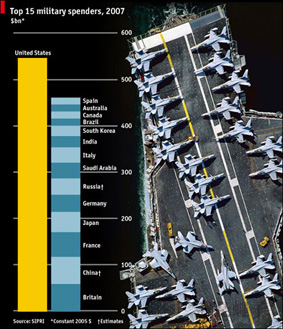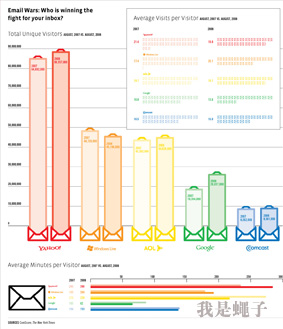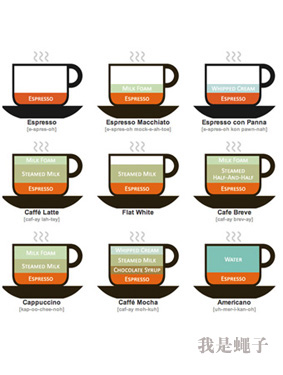子版块
本站所提供的信息和内容仅供参考,不构成任何投资、交易或其他商业行为的建议或指导。用户在使用本站时,应自行承担风险和责任。本论坛及其成员不对任何因使用本论坛而产生的损失、损害或费用承担责任。1、外链论坛里的文章帖子图片属于用户自主发表,仅代表作者个人意见,与本网站立场无关,本站不承担任何法律责任。2、管理员和版主有权不事先通知发贴者而删除相关违规文章。3、外链论坛部分内容转载自其它媒体,但并不代表本站赞同其观点和对其真实性负责。4、外链论坛帖子作者须承担一切因本文发表而直接或间接导致的民事或刑事法律责任。5、如本帖侵犯到任何版权问题,请立即告知本站,本站将及时删除并致以最深的歉意。6、本论坛广告只做展示形式,不对其内容真实性负责,如您发现违法广告,请及时联系管理员。7、若是发布的内容产生了纠纷和责任,本站会配合相关部门提供相关信息
0 0 254天前
不锈钢管的英文是"stainless steel pipe"。在发音上,"stainless"发音为 /ˈsteɪnlɪs/,其中"stain"发音类似"stein"(像酒杯的名字),而"less"发音较轻,类似于单词"less"的发音。"steel"发音为 /stiːl/,其中"st"发音类似于"stand"的开始部分,"eel"发音则类似于单词"eel"(鳗鱼)的结尾部分。"pipe"发音为 /pɪp/,发音时嘴巴稍微张开,舌尖轻触下齿龈。连起来读就是"stainless steel pipe",注意发音时要流畅自然,不要过分强调每个单词的发音。http://www.jns904lbxg.com/html/8205494946.html

0 0 82天前
As a designer, my role is to solve client dilemmas creatively. Crafting a compelling design proposal that paves the way for collaboration is a crucial step before diving into a project. This article delves into the art of composing a sophisticated design proposal, sharing insights I’ve gathered along the way.
Strategy for Design ProposalsJust as product design demands strategy, so does your proposal. Strategizing involves orchestrating a series of steps that persuade clients to invest in your design services. It’s akin to analyzing why users might abandon an online car insurance quote—understanding their hesitations helps shape your proposal strategy.Address the common reasons clients might hesitate:They don’t perceive a problem.The problem seems non-urgent.Doubts about your capability to solve it.Concerns over cost.Your strategy should address these sequentially:Highlight the existence of a problem.Emphasize the urgency to act now.Demonstrate your capability.Shift focus away from immediate cost concerns.Leveraging Experience and MethodologyClients often misidentify their issues, mistaking the absence of a specific solution for the root cause. Your role is to redirect their focus from solutions to accurately defining the problem. This strategic shift empowers service-based consultancies while leveling the playing field against product-oriented companies.To achieve this, you’ll rely on:Experience: Share industry insights, showing common challenges faced by similar-sized businesses. Specialization in core industries is key.Methodology: Apply and articulate your methodical approach clearly. Techniques like Customer Journey Maps and Service Blueprints help contextualize and define problems, then offer a roadmap for efficient resolution.Industry ResearchDemonstrate that your proposal isn’t uncharted territory. Conduct targeted research that showcases the timeliness of addressing certain issues in the competitive, consumer, and technological landscapes. Keep your findings concise, focusing on:Competitive environment: Rivals’ actions and responses to shared challenges.Consumer behavior: Shifts in usage patterns.Technological advancements: Trends and cost implications.Use a mix of methods to gather data, including industry reports, online searches, slidesharing sites, and subscriptions to relevant news feeds.Designing the Proposal ItselfYour proposal’s design is a testament to your capabilities. Remember:Keep it concise, avoiding lengthy Word documents.Avoid unnecessary animations in presentations.Aim for a professional, publishable quality that can circulate within the client’s organization.Showcase your information design prowess through layout, color, typography, and copywriting.Treat the proposal as the first tangible deliverable that reflects your brand’s sophistication.When showcasing past work:Limit cases to prevent undervaluing your expertise.Highlight project processes, not just outcomes, to demonstrate tailored solutions.Emphasize how your methodology informed problem-solving in past projects.Pricing TalkDeflect pricing discussions initially. Focus on establishing yourself as the ideal candidate. Standard company intros, repetitive case studies, or poorly designed presentations can undermine your negotiating power. Let sales handle the financial talk.A Basic Proposal FrameworkA solid proposal framework follows a simple structure: Identify the problem, present the need for a solution, and affirm your ability to provide it. Incorporate your experience and methodology throughout, as shown in a mind map (hypothetical example).Final ThoughtsA design proposal’s ultimate goal is to secure the project by fostering trust in you and your team, not just your designs. Clients value your analytical skills and methodology more than the specifics of a design concept. The proposal drafting process is itself a training ground for honing product thinking skills, encompassing problem analysis, methodology evolution, market trend navigation, design abstraction, planning, delivery, and persuasive strategies.These insights are applicable not only to design consultancies but also to product planning within companies. Remember, every summarized “golden rule” is but a snapshot in time; the true essence lies in continuous adaptation and growth.Writing a Respectable Design Proposal: A Comprehensive Guide-乐搜源码 (lesoym.com)

0 0 99天前
Unlocking the Secrets of Effective PPT ColorsLately, I’ve been frequently asked how to handle colors in PowerPoint presentations, and while I’ve hesitated to give a comprehensive answer (given my non-design background and limited color expertise), the inquiries have piled up. Here, I offer my personal insights to foster discussion and exchange.The forum abounds with tutorials on color, but understanding color in depth requires more than just studying its principles and theories; analyzing and critiquing actual designs is essential. Our forum showcases many great works, yet lacks thorough dissections. My color discussion today will draw from these works, marking my first attempt at such analysis – feedback is warmly welcomed.A common misconception persists that vibrant, varied colors make a presentation engaging, while a limited palette leads to boredom. In reality, an excess of colors often complicates matters. Many visually appealing forum submissions employ minimal colors, sometimes even monochromatically, acknowledging that novices may lack a nuanced sense for color harmony. Thus, a beginner’s journey should start with black and white. If you struggle to create satisfying pages with just these and one additional color, it signals a need to strengthen other design fundamentals before delving deeper into color theory.Key Points:Starting with Monochrome: Monochrome doesn’t equate to dullness. Kosmos’ “Original 14 + Master Advancement Commemoration” uses faint blue as its sole color against a black and white backdrop. The effectiveness lies in巧妙的形状运用和版式布局, particularly the use of points and lines. This highlights how compelling design isn’t reliant on a rainbow of hues.Combining Monochrome with Images: To simplify a colorful image, shrink its size, letting the monochrome dominate. In “Sales Manual” by Little Shu, red reigns while images add color without disrupting the overall palette. The simplicity emphasizes other elements, like headlines and numbers, and the use of enlarged text for keywords showcases thoughtful design amidst ample whitespace.Monochrome and Grayscale: Once comfortable with monochrome, explore adding depth with grayscale. Most dimensional designs utilize the spectrum between black and white. Xiaoba’s “Three Steps to a Stellar Year-End Report” masterfully incorporates shades of gray alongside a blue hue, enhancing visual depth and complementing the monochrome beautifully.Fading Images: For images too colorful or large to be subdued, fading is key. PowerPoint 2010 allows easy adjustment of brightness and contrast. “[Bread] – The Importance of Integrated Marketing to Media” demonstrates this, where faded images retain expression while allowing the main color scheme control. Strategic use of grayscale ensures harmony, reinforcing the importance of layout and composition.Challenges with Vibrant Large Images: When preserving a large image’s natural colors, monochrome still has a role in guiding layout through consistent application across pages. “Today, Did You Layout?” by Mo Shang Chu Xin cleverly uses gray to unify disparate colorful images, with orange-yellow appearing sparingly yet consistently, tying pages together with a “widescreen” effect, fostering coherence.In summary, when color choices overwhelm, begin with black and white to assess other design elements. To hone your color skills, embark on a monochromatic journey, integrating it seamlessly with grayscale and mastering the art of contrast and cohesion.

0 0 114天前
I’m often asked about color selection in presentations, and truthfully, I follow my intuition to combine hues that feel pleasing. As the saying goes, let your senses lead the way. Here, I’ll share some insights and tips on this intuitive process.1. Choosing Primary and Supporting ColorsIn PPT design, colors are categorized into primary and supporting roles.Primary Color: This acts as the visual focal point, influencing the entire design’s balance. Its brightness, size, and saturation directly affect the supporting colors and the overall aesthetic impact.Supporting Color: These hues counterbalance the primary color’s intensity, reducing viewer fatigue by visually dispersing attention. When using two or more striking contrasting primary colors, it’s crucial to introduce a neutral like black, gray, or white to harmonize them. Consider their brightness, contrast, and spatial proportion before finalizing your supporting palette.
2. Establishing a Color ThemeColors within the same hue family can transform unexpectedly when lightened, darkened, or desaturated. Maintaining a consistent tone—whether cool or warm, blue-based or red-based—is key to avoiding a chaotic look. Color theme approaches include:Monochromatic: Combining tones within the same hue for a unified effect.Analogous: Pairing adjacent or closely related hues, offering subtle variations that keep the design lively.Contrasting: Mixing hues far apart on the color wheel, creating vivid visual contrast that balances through complementary forces.3. Incorporating Neutral Helpers: Black, White, GrayNeutrals excel in transitional roles, smoothly connecting diverse colors. Black and white often create distinct breaks, while gray offers a more subtle blend. However, their overuse can stabilize the design to a fault, potentially stealing focus due to their innate prominence. While leveraging these neutrals, be mindful of their impact on the overall visual hierarchy.Ultimately, successful color coordination revolves around contrast, support, balance, and harmony. Though straightforward in theory, mastering it requires observation and practice.https://www.188688.xyz/2467.html

0 0 114天前
The decorative elements of a layout—comprising text, graphics, and colors arranged through points, lines, and planes—form the visual tapestry of a presentation. In the realm of PowerPoint, the adage “big images, few words” has deeply ingrained itself, given that visuals pack an 85% stronger punch than mere text. Although resources like Sourcing China and Zcool offer free high-resolution images domestically, the hunt for additional quality resources often feels fruitless. However, the potential of even small images, when creatively deployed, can surpass initial expectations.Pictures: Beyond Documentation to ArtistryPictures serve not only to document and facilitate information exchange but also to evoke artistry. When crafting presentations, ample image resources are essential, yet frequently, the search yields small-sized, low-resolution images. Far from being unusable, these images can still work wonders. Let’s explore how:1. The Power of Image QuantityThe number of images impacts audience engagement. A single, meticulously curated image, like a carefully cropped portrait of website editor ALLAN CHOCHINO complemented by color blocks, can create a refined and sophisticated impression.2. Bleed Images for Impact“Full-bleed” designs, where images extend to the page edges, are a staple in graphic design. A simple white grid overlay can effectively partition and enhance such images. Attention to cropping dimensions and the nuances of facial expressions and orientations is vital.3. Hierarchical Scaling for EmphasisImage size significantly influences message conveyance. Highlighting key images through enlargement or artistic enhancement while downsizing supplementary ones establishes a clear hierarchy. Case in point, a touch of Photoshop magic to vivify Rick Rescorla amidst subsidiary images.4. Lively Atmosphere with Multiple ImagesAdding multiple images (three or more) infuses vitality into a layout, fostering an energetic ambiance. Varied image sizes, as seen in ‘The Back of The Napkin’ promotional slide, can be harmoniously arranged, defying the simplicity of a mere list, to reveal an orderly, visually satisfying composition.5. Color Blocking for ClarityEmploying color blocks need not追求 extravagant aesthetics; basic arrangements of points, lines, and planes can vertically and horizontally divide the page,隔离文字与图片, creating a rational, ordered aesthetic.6. Revitalizing Chaos with RecoloringEven the humble task of recoloring disorganized images, a feature readily available in PowerPoint 2007, can breathe new life into a slide, demonstrating the power of thoughtful manipulation.These illustrations prove that, despite the absence of large images, meticulous cropping, creative combinations, and strategic placement can harmonize form and content, invigorating layouts with a dynamic coherence.https://www.188688.xyz/2464.html

0 0 114天前
When discussing chart design, do spreadsheets filled with numbers and conventional pie charts in PowerPoint immediately spring to mind? My perspective, however, extends beyond cluttered tables to a realm where information is not just presented but transformed into a compelling narrative through visual storytelling. Here are a few common yet impactful ways to visualize your PowerPoint content:1. Text + NumbersCombining text and numbers is a tried-and-true method of communication. This straightforward approach, which has evolved from simplistic bar graphs and pie charts into richly designed graphical elements, remains a cornerstone of data visualization. The key lies in concise, easily digestible text and clear, unambiguous numbers. For instance, when illustrating global military spending in 2007, clarity is crucial to avoid misinterpretation – where each color block’s height, not the distance from the base to the country name, represents the expenditure.2. Graphics + SymbolsGraphics paired with symbols constitute a potent and versatile means of conveying complex ideas simply and engagingly. These visual elements imbue data with life, transforming dry statistics into vivid, relatable narratives that transcend linguistic barriers. An illustration mapping out various coffee types, for example, not only educates viewers on the composition of their favorite lattes or cappuccinos but also adds a touch of fun and personality.3. Color Schemes and LayoutsColor plays a pivotal role in visual communication, as demonstrated by maps that use color blocks to differentiate between concepts. Skillful application of color by designers can simplify comprehension, distinguishing between similar yet distinct entities and reducing cognitive load. Companies like Golden Section, specializing in chart design, create visually stunning graphics for newspapers and magazines, such as an infographic mapping global happiness indices based on a survey conducted by The Globe and Mail. Even without granular detail, such visuals provide a snapshot of worldwide living conditions.These are but a few broad categories within the vast landscape of chart design. There’s always room to explore further, and sharing innovative approaches is invaluable. While not everyone aims to become a professional infographic designer, incorporating these principles can significantly elevate your PowerPoint presentations.https://www.188688.xyz/2456.html



0 0 114天前
Design Technique 1:Corporate training sessions tirelessly emphasize “team spirit,” a theme often echoed in company brochures. Typically, this is depicted through group photos, either realistic or abstract. But what about alternative representations?We can compile employee photos, not haphazardly, but through meticulous design. Start by placing a grid of guidelines on a blank page, facilitating orderly placement of photos. Prior to this, standardize each photo’s background and effects for consistency. Arrange the photos in a grid pattern, with faces mostly oriented towards the center, and strive for an even distribution of light and dark across the layout. Enlarging a select few images adds visual punch. Replace some photos with colored blocks, embedding relevant text within them. These blocks can mirror the photo backgrounds, enhancing depth.
Design Technique 2:Carnegie Mellon University’s Software Engineering Institute’s 2006 annual report cover showcases a carefully curated collage of staff photos, exuding visual vitality in contrast to typical yearbook designs. The dynamic arrangement of images infuses the cover with energy. How to replicate this? Begin by selecting and cropping images to create a sense of foreground, midground, and background. Next, horizontally stagger the rows, avoiding a static, brick-wall-like pattern. Lastly, resize certain images for added variation.
The art of the grid goes beyond these two examples; with a keen eye, you’ll discover beauty in everyday arrangements.https://www.188688.xyz/2450.html



0 0 114天前
Optimizing PowerPoint Focus: Enhancing Your Presentation’s Visual ImpactWhen discussing chart design, do spreadsheets filled with numbers and conventional pie charts in PowerPoint immediately spring to mind? My perspective, however, extends beyond cluttered tables to a realm where information is not just presented but transformed into a compelling narrative through visual storytelling. Here are a few common yet impactful ways to visualize your PowerPoint content:https://597788.xyz/1. Text + Numbershttps://138238.xyz/Combining text and numbers is a tried-and-true method of communication. This straightforward approach, which has evolved from simplistic bar graphs and pie charts into richly designed graphical elements, remains a cornerstone of data visualization. The key lies in concise, easily digestible text and clear, unambiguous numbers. For instance, when illustrating global military spending in 2007, clarity is crucial to avoid misinterpretation – where each color block’s height, not the distance from the base to the country name, represents the expenditure.2. Graphics + SymbolsGraphics paired with symbols constitute a potent and versatile means of conveying complex ideas simply and engagingly. These visual elements imbue data with life, transforming dry statistics into vivid, relatable narratives that transcend linguistic barriers. An illustration mapping out various coffee types, for example, not only educates viewers on the composition of their favorite lattes or cappuccinos but also adds a touch of fun and personality.3. Color Schemes and LayoutsColor plays a pivotal role in visual communication, as demonstrated by maps that use color blocks to differentiate between concepts. Skillful application of color by designers can simplify comprehension, distinguishing between similar yet distinct entities and reducing cognitive load. Companies like Golden Section, specializing in chart design, create visually stunning graphics for newspapers and magazines, such as an infographic mapping global happiness indices based on a survey conducted by The Globe and Mail. Even without granular detail, such visuals provide a snapshot of worldwide living conditions.These are but a few broad categories within the vast landscape of chart design. There’s always room to explore further, and sharing innovative approaches is invaluable. While not everyone aims to become a professional infographic designer, incorporating these principles can significantly elevate your PowerPoint presentations.



0 0 117天前
In the age of ubiquitous digital cameras and the proliferation of free or inexpensive image resources, integrating visuals into presentations has become increasingly popular. While pictures can significantly enhance certain speaking engagements, such as keynote addresses or auditorium-style presentations, they are not universally suitable and are often utilized incorrectly. This article aims to provide guidance to ensure your next presentation hits the mark.Case Study: The Single Slide ScenarioImagine you are preparing a presentation on the current challenges in Japan’s education system, particularly addressing the dwindling student population due to low birth rates. A slide addressing this topic could either feature a full-width image or a smaller photograph of a Japanese school playground accompanied by a simple line graph illustrating the downward trend in enrollment over time. Let’s examine some common mistakes made when incorporating images:1. Image Too Small: A photo too minuscule to be discernible serves no purpose. In our example, an image sized at 183×152 pixels on an 800×600 slide is rendered ineffective.2. Misplaced Images: Even appropriately-sized images can be lost if carelessly positioned, blending into the background and detracting from their impact.3. Nearly Full-Screen yet Imperfect: Enlarging an image close to full-screen may still fall short if it doesn’t fit perfectly, revealing bits of the PowerPoint template like visual noise.4. Poor Image Quality: Frequently encountered, this occurs when low-resolution files are stretched, resulting in pixelation.5. Low-Quality Images with Watermarks: Using free, low-quality, watermarked images not only looks unprofessional but also distracts the audience.6. Horizontal Distortion: Stretching images horizontally to fit is a common blunder that distorts the original aspect ratio.7. Vertical Distortion: Similarly, stretching images vertically can produce absurd results, such as seemingly giant students in our example.8. Tiled Images: Just because software offers tiling doesn’t mean it’s advisable; it can create a jarring background.9. Using Clip Art: Relying on generic clip art should be avoided unless modified to suit your specific context.10. Irrelevant Images: An image unrelated or weakly related to the content, like people shaking hands in front of a world map for a discussion on Japan’s birth rate, undermines credibility.11. Background Overpowering Content: Even stunning images need editing to ensure the main message stands out. Balancing text and imagery, as in the example where careful cropping enhances readability, is crucial.Text and Image HarmonyTemplate SkyThe integration of text within images isn’t the sole approach to merge information and visuals. The key lies in thoughtful design tailored to the subject matter. The goal should dictate the use of images; a powerful presentation can be achieved without any pictures, provided the content and delivery are compelling.There are myriad ways to elevate your use of images in presentations. Reflect on your own practices and share your insights. Remember, the effectiveness of visuals in your presentation hinges not on quantity but on their relevance, quality, and how thoughtfully they are incorporated to serve your narrative. Avoid the pitfalls outlined above, and your presentations will captivate and persuade with precision and impact.https://www.188688.xyz/2416.html

0 0 128天前








